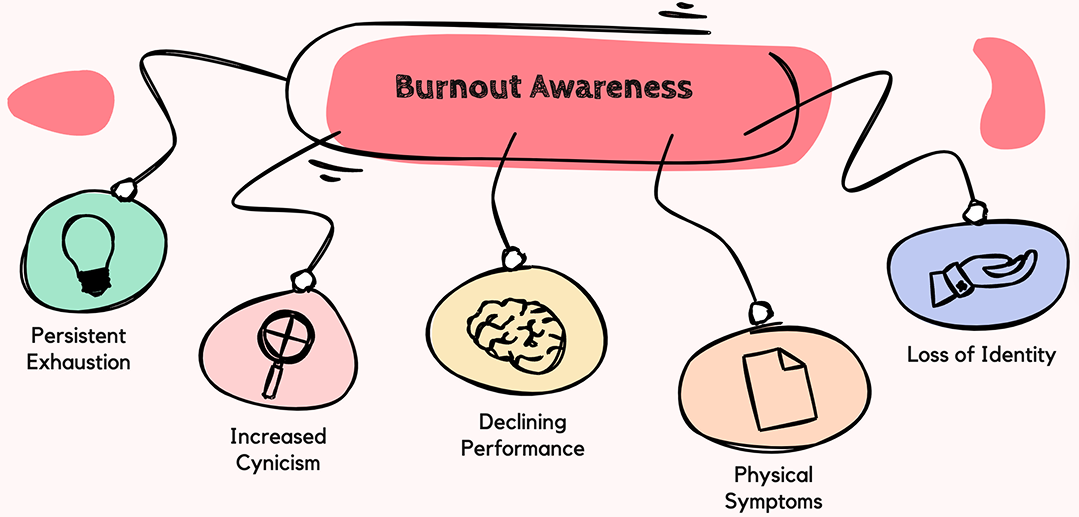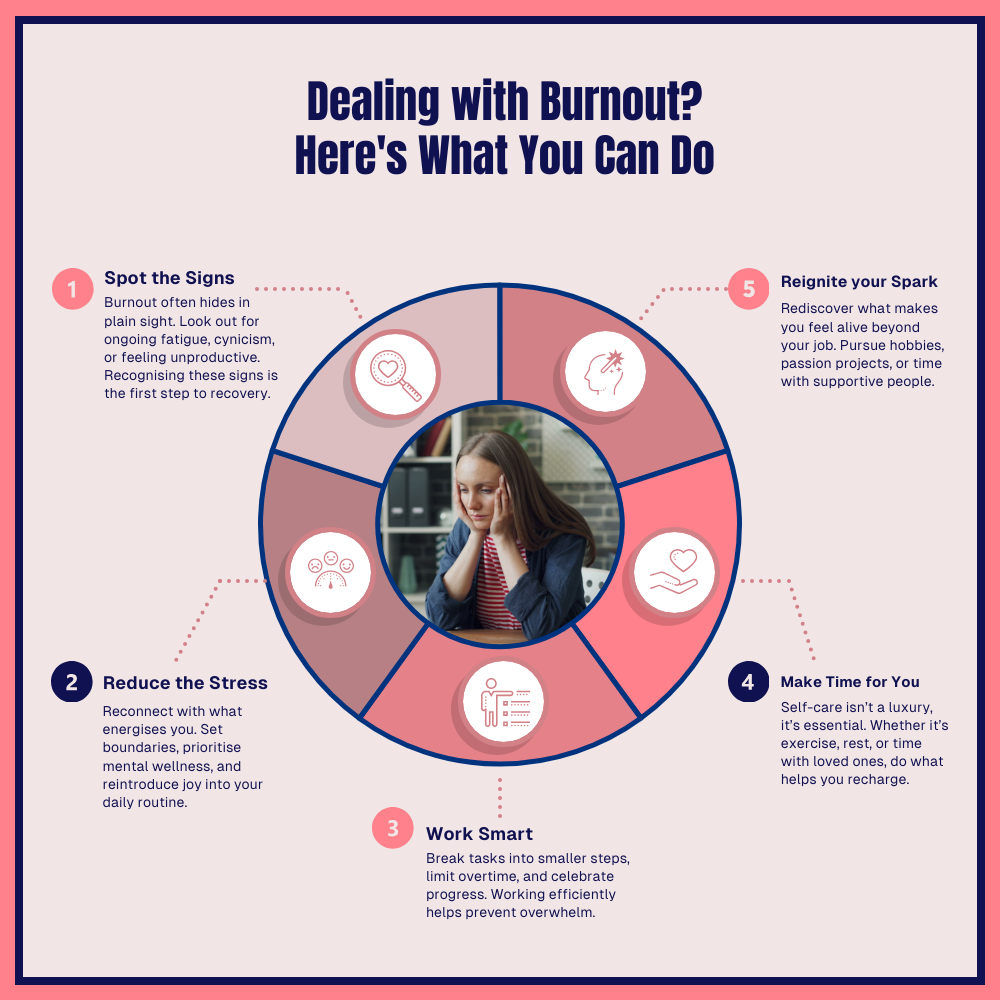ALorem ipsum dolor sit amet, consectetur adipiscing elit. Maecenas eu porta tellus. Mauris sit amet efficitur velit, vitae mollis ipsum. Cras a facilisis sem, vulputate accumsan diam. Praesent molestie, mauris nec dictum condimentum, sem metus lobortis orci, vitae auctor nunc ante et nunc. Phasellus dui ligula, hendrerit eget urna sed, porttitor sagittis libero. Nam tempor felis quis erat imperdiet pulvinar. Aenean euismod vitae nibh eu pretium. Cras quis elementum risus, nec ultrices felis. Nulla aliquet elementum erat et finibus. Quisque aliquam quam ultrices nibh congue sollicitudin
You've been pushing yourself for months, maybe even years. The ambition that once fuelled your drive now feels like it's draining your soul. That project you used to be excited about? Now it's just another item on your never-ending to-do list. If this sounds familiar, you might be experiencing burnout – and you're not alone.
Burnout isn't just feeling tired after a long week. It's a state of chronic stress that leads to physical and emotional exhaustion, cynicism, and feelings of ineffectiveness. The worst part? Many ambitious professionals don't recognise burnout until they're deep in its grip.
The road to becoming is often challenging. But there's a crucial difference between productive discomfort and destructive burnout
Let's explore the five telltale signs of burnout and, more importantly, what you can do to reclaim your energy and purpose.

Remember when a good night's rest would recharge your batteries? With burnout, that restoration doesn't happen. You wake up as tired as when you went to bed.
What it looks like:
What to do about it: Start by auditing your energy expenditure. Where are you leaking energy? This might mean temporarily scaling back commitments, setting firm boundaries around work hours, or scheduling regular short breaks throughout your day. Your body is telling you something important and it's time to listen.
Remember when you used to believe in what you were doing? When burnout takes hold, that connection to meaning fades. You might notice yourself becoming more cynical about your work, colleagues, or the very purpose that once drove you.
What it looks like:
What to do about it: Reconnect with your "why." What initially drew you to this career path? Sometimes burnout isn't about what you're doing but how you're doing it. Consider ways to restructure your role to incorporate more of what energizes you. Even small shifts can reignite that spark.
The cruel irony of burnout is that the harder you push, the worse your results become. You might find yourself working longer hours yet accomplishing less than ever before.
What it looks like:
What to do about it: Accept that working harder isn't the solution. Instead, work differently. Break large tasks into smaller chunks with clear stopping points. Consider implementing productivity techniques like the Pomodoro method (25 minutes of focused work followed by a 5-minute break). Most importantly, celebrate small victories to rebuild your confidence.
Your body often recognises burnout before your mind does. Those headaches, digestive issues, or muscle tension aren't random coincidences. These physical symptoms often contribute to deeper issues like imposter syndrome, which further compounds burnout. Many professionals find themselves questioning their abilities as their performance suffers, creating a dangerous cycle of doubt and exhaustion. Learn more in our guide on Why Imposter Syndrome Happens and How to Overcome It.
What it looks like:
What to do about it: Your physical wellbeing is non-negotiable. Schedule a check-up with your doctor to rule out other health concerns. Then, commit to daily physical movement – even a 10-minute walk can shift your mental state. Consider mind-body practices like meditation or breathing exercises that activate your parasympathetic nervous system, counteracting the stress response.
These physical symptoms often contribute to deeper issues like imposter syndrome, which further compounds burnout (learn more in our guide on Why Imposter Syndrome Happens and How to Overcome It.)
When burnout reaches its peak, your entire identity becomes wrapped up in productivity. Hobbies, relationships, and the things that make you uniquely you fade into the background.
What it looks like:
What to do about it: Deliberately schedule time for activities that have nothing to do with achievement or productivity. Reconnect with old hobbies or explore new ones. Most importantly, spend time with people who know and value you beyond your professional capabilities.

Recovering from burnout isn't about pushing through. It's about fundamental reassessment and realignment with what truly matters to you. As you recover from burnout, you might need to update your professional materials to reflect your new priorities and strengths. Our Resume Without Work Experience guide offers valuable insights on showcasing skills and achievements, principles that apply equally to experienced professionals repositioning themselves after burnout.
The journey from burnout to balanced success isn't one you have to navigate alone. At WCFC Academy, we've guided thousands of professionals through this exact transition. Our structured frameworks help you not just recover from burnout, but redesign your approach to success entirely.
Ready to transform career burnout into career breakthrough? Start your journey with our free Gallup StrengthsFinder Assessment. Understanding your innate strengths is the first step toward creating a professional life that energises rather than depletes you. Your path to authentic success begins with a single step – take it today.
“Raesent molestie, mauris nec dictum condimentum, sem metus lobortis orci, vitae auctor nunc ante et nunc ligula”



Your potential is infinite. Our mission is to activate and unleash it in the right environment.